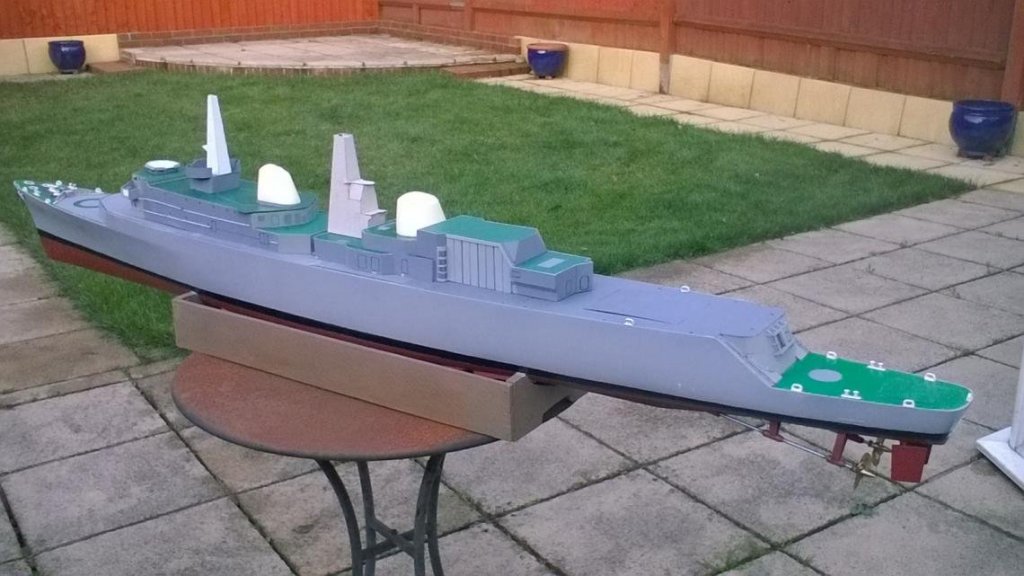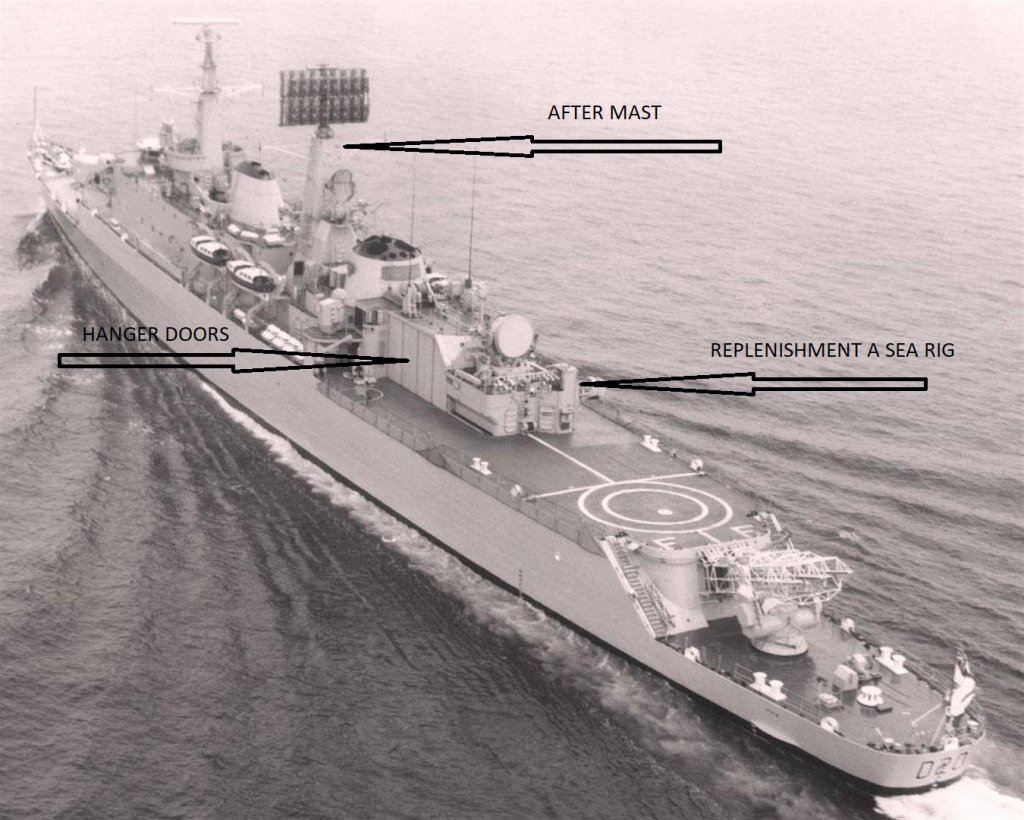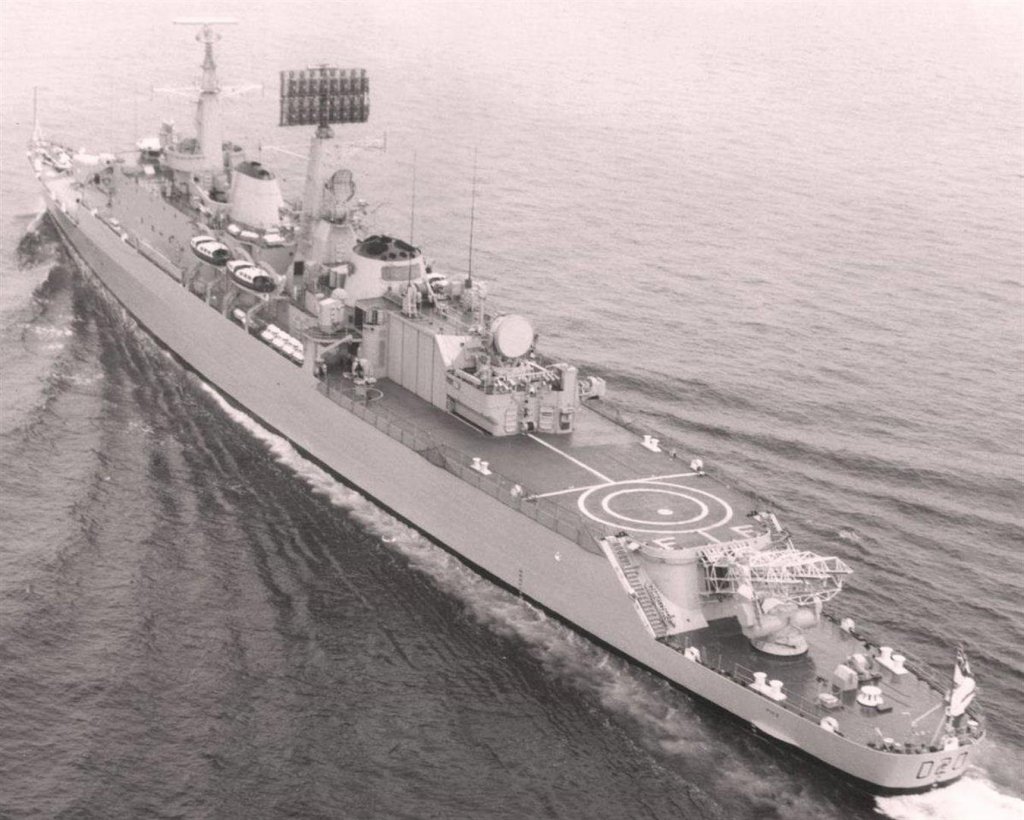-
Posts
7,009 -
Joined
-
Last visited
Content Type
Profiles
Forums
Gallery
Events
Everything posted by Kevin
-
Good evening everyone, just mended my PC by putting a new power supply in, so i can make a post tonight not happy with my first attempt at the superstructure in Plasticard, so last weekend i started again, it is going together much better this time, the problem i am finding is that the plans, for the cost are well poor, i have found lots of mistakes, but the worst part is that some of the lines are as thick as the plastic i am using, so having to be very careful each each cut could be at least 1MM outalso references are not as plentiful as anticipated, on the forward end of the hanger by the doors there are lots of air vents/exhausts, and at present i am unable to work out haw the fitthoroughly enjoying this,Stbd side aft this is where the replenishment at sea rig (RAS) was fitted, but removed at some point around 1980 the offices located in the hanger are to tall, so will have to be adapted/replaced aft of the hanger the RAS rig is the pillar on the right this was created as one piece on the two previous attempts, worked out much better as a seperate module the basics of the after mast has now been made, it is hollow too allow for a motor and wiring as off last night
-
Lovely to catch up on your build, she looks fantastic
- 593 replies
-
- royal william
- euromodels
-
(and 1 more)
Tagged with:
-
I used admiralty paints yellow orcha which was listed as authentic, but the true colour is more pink apparanty
- 56 replies
-
- sd-14 cargo ship
- card
-
(and 1 more)
Tagged with:
-
Jon good evening I changed my job in January this year, and as a result i have less free time on my hands, i finished the Bismarck in June with all intentions of packing up boat building altogether, after discussing it with the admiral it was decided that to give up would be the wrong decission, but to get rid of most of my started but not completed builds that would never be completed. and to purchase a build of my dreams, on the proviso that they are completed Out went the war train, M1070 transporter set Amerigo Vespucci and a few others, (build logs now removed), and that left me with the 1/70 SD14 and 1/72 Hms Victory and my new build the 1/72 HMS Fife the fife takes all my home free time, the SD14 i can take to work and do some work on her at lunch times, and the Victory is on long term hold, as i am still undicided on how to complete her HMS Fife SD14 HMS Victory
- 56 replies
-
- sd-14 cargo ship
- card
-
(and 1 more)
Tagged with:
-
yes there is but it is also very relaxing, you can see that one or two bits dont look right, but as more gets added, as there is another deck above this one it all ties in
- 56 replies
-
- sd-14 cargo ship
- card
-
(and 1 more)
Tagged with:
-
Stage 3 building the after superstructure in Plasticard I purchased A4 and A5 sheets of card from Amazon/Ebay in 0.5mm, 0.75mm and 1mm made a better light box by using a sheet of glass placed over a lamp over the plans I layed a thin sheet of plastic and traced the plan lines onto it, this then also act as a floor I managed to obtain a few photos of the hanger internal details, as i want to display it with the hanger door open, i may also go for a few other bulkhead door to be open as i proceed so i am having to think ahead, plus i am having to think about where the wiring for the radars and lights be be going i actually spent a bit to much time playing with the hanger, she has an office and oil store opposite the hanger doors with sliding doors so i have tried to create this, but still needs a lot of work to pass the rivet counters, from there it was quite easy to continue with the rest of the after superstructure at main deck level office and oil store
-
although it does not look any thing fantastic, a lot of work was required, just to get her to this stage, all the card has been painted in modge podge, which allows me to paint the surface popeye, it has about 4500 pieces
- 56 replies
-
- sd-14 cargo ship
- card
-
(and 1 more)
Tagged with:
-
Good evening Danny, i have failed to update the log, I will try to address my shortcomings as soon as possible, Im not presently working on her at present, but I take bits to work with me and if i find time during my lunch break then i tend to do a bit of cutting out all my free time at home is on my HMS Fife build
- 56 replies
-
- sd-14 cargo ship
- card
-
(and 1 more)
Tagged with:
-
Lovely to catch up on your build, must look at mine again soon
- 527 replies
-
- caldercraft
- victory
-
(and 1 more)
Tagged with:
-
im also interested in following this build, i found this, Im happy to delete if you want me to, I will be following, good luck https://de.wikipedia.org/wiki/Admiral_Brommy_(Schiff,_1851)
-
OC good morning at sometime in the near future i need to make a decision as to what will go into the hull, because as you can see in the photo the extension of the flightdeck has a structure beneath (Seaslug missile loading hatch) it which ties into the 1/4 deck in my little dream world i want the launcher, capstan and stern lights working,then there is access to the rudder and shafts required, possibly might be able to have one removable section that will give me access into that area
-
Congratulations, on a truly remarkable build, I am so pleased to have been on the journey with you
- 2,625 replies
-
- kaiser wilhelm der grosse
- passenger steamer
-
(and 1 more)
Tagged with:
-
Good evening everyone Have decided that i have the ability to understand the plans, but a slight change to the way I will replace the card, No longer will it be 1MM Plasticard, I decided that 3mm MDF will not flex so much, to proceed with the superstructure I need a main deck so i used a template of 4mm Mdf (3mm) and decking to put blocks in against the hull to support the 1/4 deck and main deck, these will remain removable for the time being, so that i can assess where any access points need to be support beams 4mm from the ledge
-
good evening and thank you for the comments, I have plenty more phots of the build, the weathering was kept quite simple with a few pastels sticks and Flory washes, i used the KA MK1 pe set
-
good evening everyone All the main deck superstructure modules have now been made once in card, I can now start the research and deciding what is right and wrong with what i have for the time period of 1978-1980, can anyone point me in the right direction for RC work, i dont know where to start or what i want, I dont want her for water work, but someone else might after me, initally I just want all lights and moving bits, but want it controlled by a handset
-
Good evening everyone As i continue building the superstructure first time around in card, it already seams to be coming together, I covered the hull in card for now, but this hasnt worked, as it has sagged, I did not put any support under it (lesson learnt, but gives a very rough platform to work with I have been using a combination of tracing paper or card taken directly from the plans, I adapted a card making light box, by putting in a larger wattage lamp, rurning it upside down and covering with glass to enable a bigger copying area
-
ej just caught up with your lol, it is hard to believe how much has changed in your build since Feb, wonderful work, sorry i have not been around more often
- 608 replies
-
- la couronne
- corel
-
(and 1 more)
Tagged with:
About us
Modelshipworld - Advancing Ship Modeling through Research
SSL Secured
Your security is important for us so this Website is SSL-Secured
NRG Mailing Address
Nautical Research Guild
237 South Lincoln Street
Westmont IL, 60559-1917
Model Ship World ® and the MSW logo are Registered Trademarks, and belong to the Nautical Research Guild (United States Patent and Trademark Office: No. 6,929,264 & No. 6,929,274, registered Dec. 20, 2022)
Helpful Links
About the NRG
If you enjoy building ship models that are historically accurate as well as beautiful, then The Nautical Research Guild (NRG) is just right for you.
The Guild is a non-profit educational organization whose mission is to “Advance Ship Modeling Through Research”. We provide support to our members in their efforts to raise the quality of their model ships.
The Nautical Research Guild has published our world-renowned quarterly magazine, The Nautical Research Journal, since 1955. The pages of the Journal are full of articles by accomplished ship modelers who show you how they create those exquisite details on their models, and by maritime historians who show you the correct details to build. The Journal is available in both print and digital editions. Go to the NRG web site (www.thenrg.org) to download a complimentary digital copy of the Journal. The NRG also publishes plan sets, books and compilations of back issues of the Journal and the former Ships in Scale and Model Ship Builder magazines.





